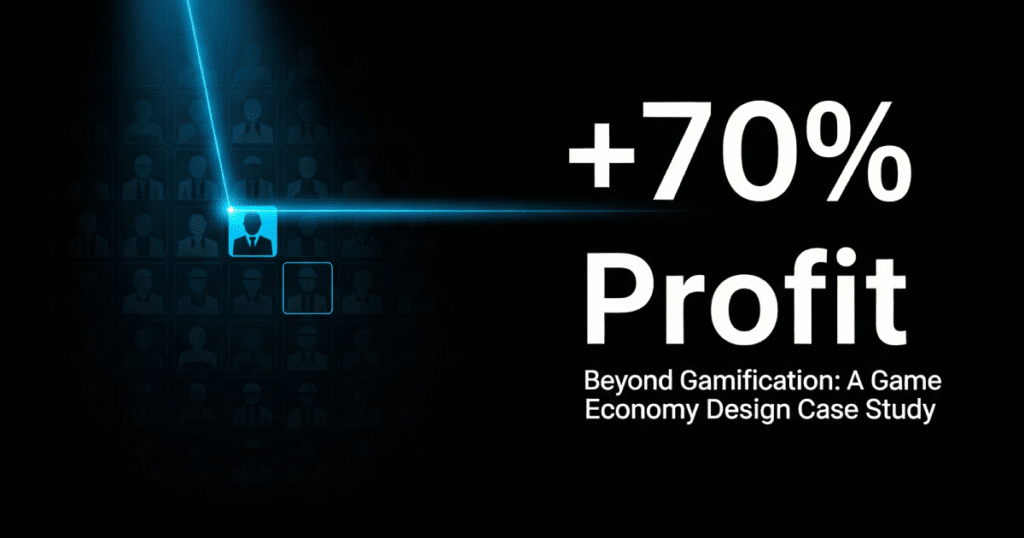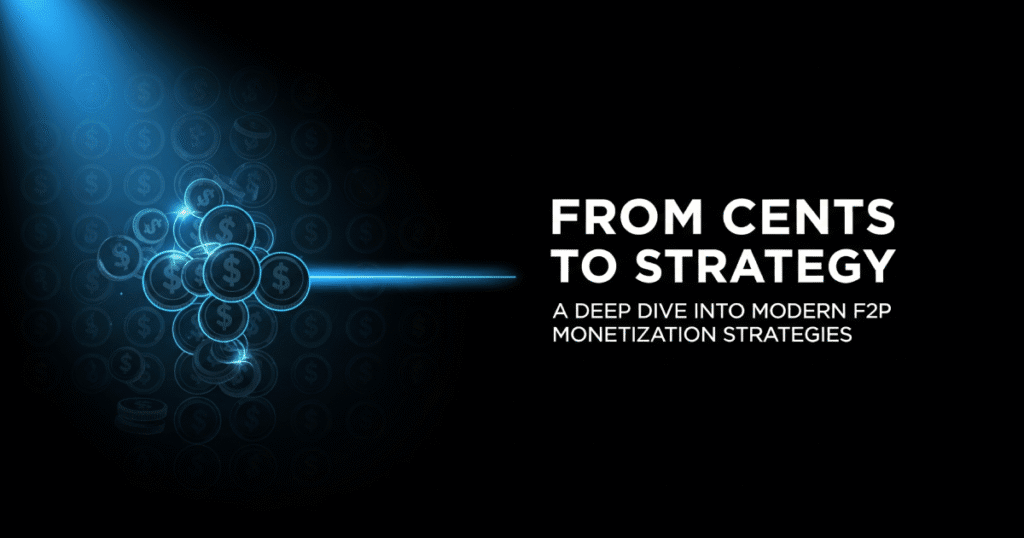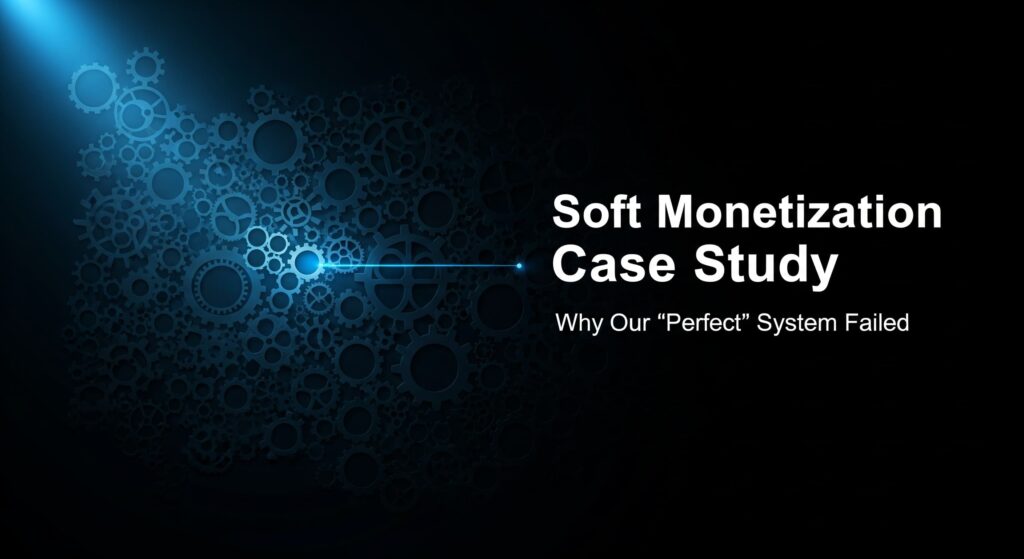While this case study comes from the EdTech world, the core principles of data-driven player segmentation, Game economy design and motivational design are universal. The methods used here to boost user LTV and retention are directly applicable to the challenges faced by today’s F2P mobile games, demonstrating how a deep understanding of user psychology is fundamental to effective f2p monetization strategies.
Project Overview (TL;DR): I led the systemic redesign of the user experience for the JavaRush e-learning platform. My primary role was to architect and implement a suite of interconnected motivational systems, including a unique player segmentation model and a rebalanced core economy. This data-driven approach directly resulted in a +70% increase in company profit, a significant reduction in user churn, and a potential +2.5% increase in total company revenue from a single feature optimization.
1. The Challenge
The JavaRush platform, a popular resource for learning programming, faced challenges common to the EdTech industry. While many users were intrinsically motivated by long-term career goals, we observed significant user drop-off during the initial onboarding phase and a decline in long-term engagement. The core business objectives were to increase user retention, improve progression through the course, and ultimately boost the lifetime value (LTV) of our user base.
2. My Role & Strategic Approach
As the Lead System Designer and Analyst on this project, I was responsible for architecting the core user experience, economy, and motivational mechanics. I worked in close collaboration with a Narrative Designer, who developed the overarching story and comics for the platform. My personal strategic approach was built on three core pillars:
- Deep Personalization: Moving away from a one-size-fits-all model to an experience tailored to different user psychotypes.
- Motivational System Design: Building a web of interconnected systems (quests, achievements, economy) to support users’ short-term and long-term goals.
- Data-Driven Balancing: Using qualitative and quantitative data to continuously optimize the user journey.
3. Implementation: A New Approach to Game Economy Design
A. The Segmentation Engine: A Data-Driven Approach to Personalization The foundation of the project was a unique segmentation system I designed to understand user motivation. The insight for this system began with a surprising anomaly. We launched an achievement system, a standard feature expected to provide a modest but positive lift in engagement. However, the initial A/B test results were unexpectedly flat. Instead of accepting this outcome, I initiated a deep-dive analysis into our qualitative data, primarily focusing on user session recordings and churn point analysis.
This investigation led me to a critical hypothesis: our user base was not monolithic. It contained distinct segments whose opposite reactions to achievements were canceling each other out. The final system was streamlined into a short, 5-question quiz combined with behavioral data from a non-linear tutorial. This allowed for accurate user segmentation in the very first session into three core groups: Positive (gamification boosts their conversion), Neutral (indifferent), and Negative (gamification actively harms their experience).
B. Personalizing the Experience: The Power of Subtraction & Adaptation This segmentation model allowed us to make highly targeted design decisions:
- The Achievement System: Our data showed that for the Negative segment (approx. 20% of users who completed the quiz), seeing achievement pop-ups decreased their conversion to level 10 by 26.3%. For the Positive segment, it increased conversion by 22.1%. Based on this, we implemented a system that hid all achievement notifications for the Negative segment. This single, counter-intuitive change had the potential to lift total company revenue by an estimated 2.5%.
- The Daily Quest System: To address short-term motivation dips, I designed a Daily Quest system to provide a layer of extrinsic motivation. This system became a core part of our liveops framework, providing daily incentives for users. Crucially, this system was also personalized. By analyzing the data, we assigned different difficulty levels to different segments, maximizing engagement and boosting progression to level 6 by 8-11% depending on the user group.
C. The Core Economy: Balancing Grind and Motivation The implementation of personalized difficulty was managed through the platform’s core economic loop. The process of balancing game economy was central to this effort. Progression was gated by a soft currency, which users spent to unlock new lectures and earned back by completing practical tasks. This rebalancing alone contributed to a +23.53% LTV uplift. For the Positive segment, the Daily Quest system acted as a targeted economic injection. By providing them with an additional stream of soft currency, we deliberately eased their path through the course, reducing friction and further boosting their engagement.
4. Measurable Results
This systematic, data-driven approach produced significant and measurable business results:
- 🚀 +70% increase in company profit within the first year
- 📈 +23.53% LTV attributed directly to the core economy rebalancing.
- 🎯 +7% LTV from implementing the personalized segmentation system.
- 💰 Users who engaged with the initial surveys had a resulting ARPU of $9, compared to $3.7 for non-engaged users over the same period.
- ⚙️ Personalizing the difficulty of Daily Quests boosted progression for key segments by up to 11%.
5. Conclusion
The key takeaway for any F2P game developer or game monetization consultant is clear: a robust game economy design, combined with personalized motivation, is the foundation of sustainable growth. The +70% increase in company profit uplift achieved here wasn’t magic; it was the result of a systematic approach that can be replicated in your project. It proves that sometimes the most impactful design decision is not what you add, but what you thoughtfully take away for the right user segment.



